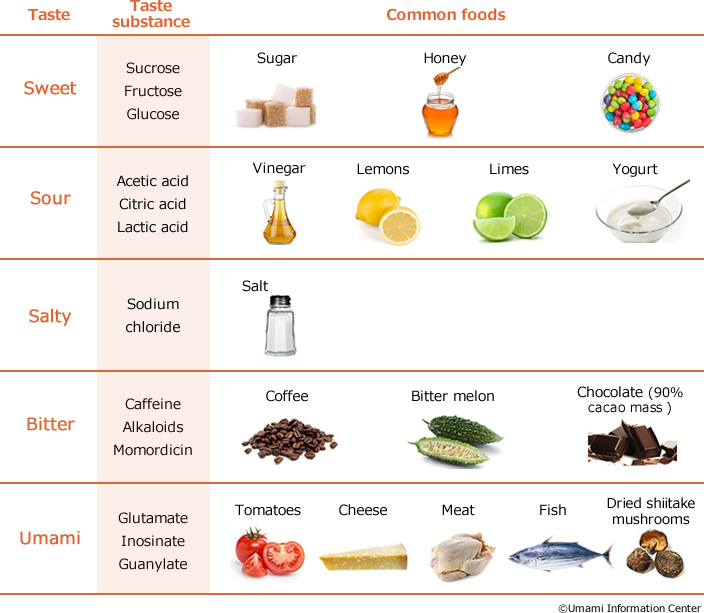Unlocking Flavor: A Deep Dive into Umami - The Fifth Taste
Umami, often called the fifth taste alongside sweet, sour, salty, and bitter, is that savory, mouthwatering sensation that makes food more delicious. It's been known for over a century and is key to many cuisines worldwide. Let's explore the science, sources, cooking impact, and how to use umami to make your food taste amazing.
The Science of Umami
In 1908, Japanese chemist Kikunae Ikeda discovered umami. He noticed kombu seaweed broth tasted different from the basic four tastes. He found glutamic acid, an amino acid, was responsible and named it "umami" from the Japanese word "umai," meaning delicious.
Our tongues have umami receptors that react to glutamate, inosinate, and guanylate. When these compounds bind, our brain senses umami. Glutamate and nucleotides together create a synergistic effect, amplifying the umami sensation. That's why tomatoes and parmesan cheese taste so good together!
Sources of Umami
Many foods are rich in umami. Here are some you can use in your cooking:
- Seaweed: Kombu and nori are full of glutamate, making them important in Japanese cooking.
- Fermented Foods: Soy sauce, miso, and kimchi contain glutamate due to fermentation. They add a complex, savory umami flavor.
- Aged Cheeses: Parmesan and Gruyere develop glutamate as they age, giving them an intense, nutty, umami flavor.
- Meat and Seafood: Cured and aged meats naturally contain glutamate and inosinate. Tuna, mackerel, and anchovies are also great sources.
- Vegetables: Tomatoes, mushrooms, and spinach contain umami. Cooking and drying them concentrates the glutamate, enhancing their savory flavor.
- Mushrooms: Dried shiitake mushrooms are high in guanylate, boosting umami when combined with glutamate-rich foods.
- Yeast Extract: Marmite and Vegemite are concentrated sources of umami, adding a deep, savory flavor to dishes.
Umami in Cooking
Using umami strategically can make your dishes taste better. Here are some tips:
- Layer Flavors: Combine several umami sources to create a complex flavor. A tomato sauce with mushrooms, parmesan, and soy sauce is better than plain tomato sauce.
- Embrace Fermentation: Use miso paste, soy sauce, fish sauce, and kimchi for depth, complexity, and umami.
- Enhance Broths and Soups: Use kombu for dashi broth, a base for Japanese soups and sauces. Add dried shiitake mushrooms for extra umami.
- Boost Meat Dishes: Marinate meats in soy sauce, Worcestershire sauce, or mushroom powder to enhance their savory flavor.
- Vegetarian Umami: Use tomatoes, mushrooms, seaweed, and fermented ingredients for umami in vegetarian dishes. Nutritional yeast adds a cheesy, umami flavor.
- The Power of Reduction: Reducing sauces and broths concentrates umami. Slow-cooked stews and braises develop rich, umami flavors.
- Umami Bombs: Use small amounts of anchovy paste or sun-dried tomato paste for a burst of flavor.
Umami and Health
Umami enhances flavor and offers potential health benefits. It can stimulate appetite, especially in older adults with decreased taste sensitivity. It can also help reduce sodium intake, allowing you to use less salt. Also, umami-rich foods like mushrooms and seaweed contain essential nutrients and antioxidants.
Examples of Umami-Rich Dishes
Here are some dishes that highlight umami:
- Ramen: Japanese noodle soup with a rich broth made with kombu, shiitake mushrooms, and pork or chicken.
- Spaghetti Bolognese: Italian pasta with a meat sauce that uses tomatoes, ground meat, and parmesan for umami.
- Miso Soup: Japanese soup made with miso paste, tofu, and seaweed.
- Kimchi Fried Rice: Korean dish with kimchi, rice, vegetables, meat, or seafood.
- French Onion Soup: Savory soup with caramelized onions, beef broth, and Gruyere cheese.
The Future of Umami
As we learn more about umami, chefs and food scientists are finding new ways to use it. It's being used to create innovative flavors, develop healthier foods, and improve the dining experience. Umami is becoming increasingly important in shaping the future of food.
Conclusion
Umami is a culinary secret weapon that can transform ordinary dishes. By understanding the science, exploring its sources, and using it strategically, you can unlock a world of flavor and elevate your cooking. Embrace the fifth taste and enjoy the journey of umami discovery!


 illustration from Umami Information Center
illustration from Umami Information Center
0 Comments